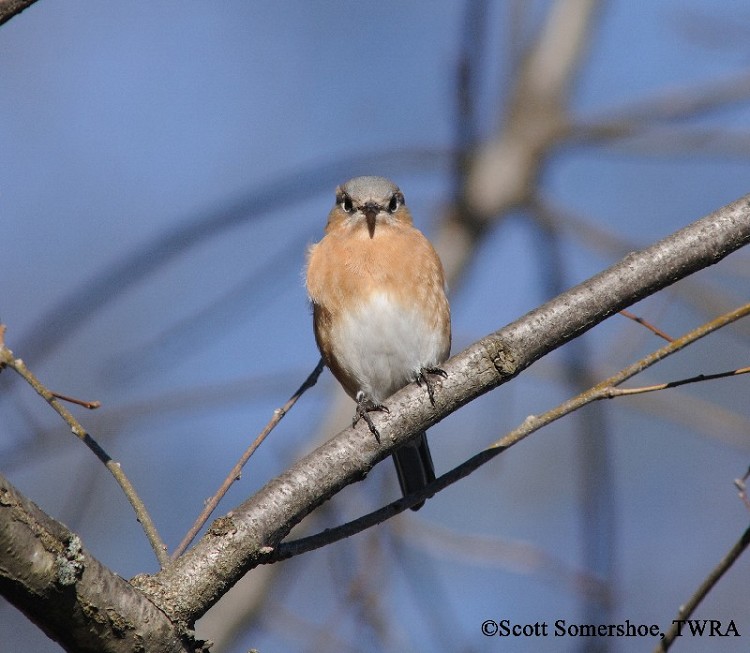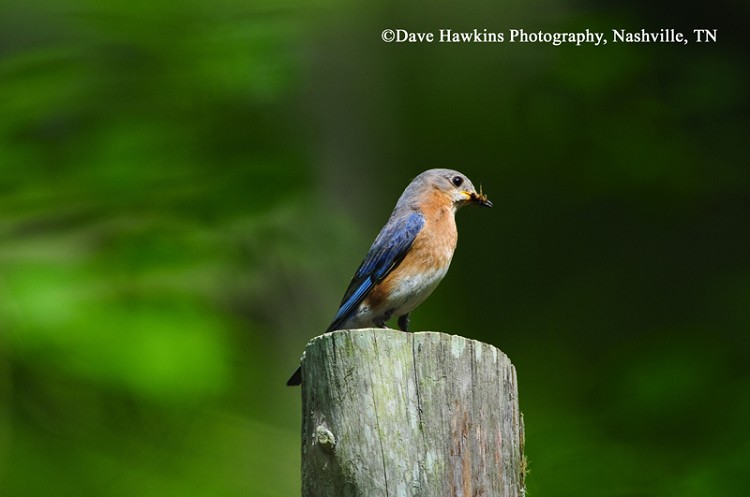Since 2002 Jim and I have been providing nesting boxes for the Eastern Bluebirds of Tennessee. As well as making available meal worm feeder, seeds and a safe enviorment for them to rear their fledglings and live all year long.
These are cheery and amusing birds to watch. And, a joy to help during this time in our area of constant construction due to the mass migration from the Western United States into The Deep South.
I have endeavored to keep a ‘scientific’ method of documentation. I use a ‘scientific’ naming system similar to what is used in the monitoring of the raptors.
In the past, since 2011, I have posted updates only in the Beakroom here in RRP forum.
Now I’d like to share the photos and notes with all the forum members.
I hope you enjoy them as much as we do tracking, documenting and 'providing' for them.
Our backyard is the very best place to view bluebirds in Old Hickory Hills. **
Note: All photographs are taken by myself and my husband. As such are our personal property and are not authorized for use outside of this forum or any of it's threads. Thank you.Eastern Bluebird
Male

Eastern Bluebird
Female


The Eastern Bluebird was chosen for TWRA's Watchable Wildlife license plate because it is a common Tennessee bird that people have benefitted by putting up bluebird boxes. This small thrush is a year round resident and can often be seen hunting along roadsides from a fence or low perch.
The breeding range of the Eastern Bluebird extends across the eastern half of North America southward into Central America. The northernmost nesters migrate to the southern part of the breeding range in winter.
The brilliant blue color of the male, the delightful call and familial behavior make the Eastern Bluebird one of the most popular songbirds in Tennessee. It is a permanent resident, though some birds may move short distances south from their breeding areas to avoid very cold temperatures.
Description: This medium-sized songbird has a large, round head, and a blue back, wings and tail. The chest is orange, the lower belly is white, and the male is brighter than the female.Adult male: a brilliant blue above and rusty orange on the throat and breast, whitish belly Female: gray-blue above and dull rust on the throat and breast, whitish belly Juvenile: similar to adult female but grayish with a speckled breast (May-August)
Length: 7"
Wingspan: 13"
Weight: 1.1 oz
Voice: The song is a soft musical cheer cheerful charmer melody. The call notes are raspy and scolding.
Similar Species:
• No other songbird in Tennessee has a blue back and orange breast.
Habitat: Open habitats with little or no groundcover such as orchards, open woodlands, clear-cuts, parks, and large lawns in suburban and rural areas. It is often observed perched on wires, posts, and low branches scanning the ground for prey. It traditionally nested in naturally occurring tree cavities or cavities created by woodpeckers in trees or fence posts.
Diet: Arthropods caught on the ground including: caterpillars, beetles, crickets, grasshoppers, and spiders are the main diet. In fall and winter, bluebirds eat large amounts of fruit from native species such as poison ivy, sumac, black cherry, dogwood, hackberry, blueberries, and mistletoe.
Nesting and reproduction: Eastern Bluebirds are cavity nesters and typically have 2 broods each year, sometimes 3, and rarely 4 often use the same nest for all broods. Bluebirds depend on naturally occurring cavities, tree cavities excavated by other species, or nest boxes. The female builds the nest of grasses, and lines it with finer material. Nest Box Instructions here.
Males attract females to the nest with a display in which he carries nesting material into and out of the cavity. The breeding pair can stay together for several seasons.
Eastern Bluebirds suffer from competition with European Starlings and House Sparrows for nest sites, but the thousands of nest boxes that have been erected appear to off-set these detrimental effects (see link below for nest box designs that exclude starlings).
Clutch size: Usually 4 to 5 pale blue (or rarely, white) eggs. Female begins laying eggs a few days after the nest is completed and usually lays one per day. In Tennessee first clutches are commonly laid in March, last clutches in July or August.
Incubation: The female incubates the eggs for 12 to 14 days. Incubation does not start until after all eggs are laid so that all eggs hatch on the same day.
Fledging: The young are fed by both parents and fledge in 15 to18 days. Young produced in early nests usually leave their parents in summer, but young from later nests frequently stay with their parents over the winter.
Songs and Calls: Song is a soft, warbled "cheerful charmer". Call is a soft "tru-ly" when communication with mate or young. Also gives a raspy alarm call.
Status in Tennessee: The Eastern Bluebird is a common permanent resident across the state though some individuals may migrate further south in winter. Populations appear to be stable, but vulnerable in especially severe winters.
Populations fell in the early 20th century due to many factors. Competition for nesting sites from introduced species, loss of open space and natural nesting cavities, increased pesticide use and climatic events contributed to the decline.
In the 1970's, conservation efforts to provide nest boxes specifically designed to keep out the larger European Starling combined with a campaign to provide and monitor boxes for use by invasive House Sparrows has helped with the recovery of the beloved species.
Fun Facts:
• The clutch size of Eastern Bluebirds varies with latitude and longitude. Bluebirds that nest farther north and farther west have larger clutches than southern nesters.
• In especially cold weather, several individuals will roost together in one cavity to stay warm. This species has been observed using nest boxes to stay warm during cold winter nights, packing 8-12 individuals into one box.
• The oldest known Eastern Bluebird in the wild was 10 years 6 months old.
**Best places to see in Tennessee: Eastern Bluebirds are found in every county in the state. Many state and local parks have "bluebird trails" with multiple bluebird houses.

 Author
Topic: THE BLUEBIRDS OF CANE RIDGE, TENNESSEE : A wildlife journal 2021 to 2026 (Read 166188 times)
Author
Topic: THE BLUEBIRDS OF CANE RIDGE, TENNESSEE : A wildlife journal 2021 to 2026 (Read 166188 times)
